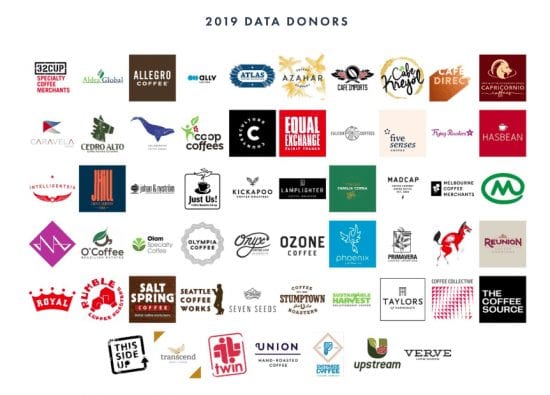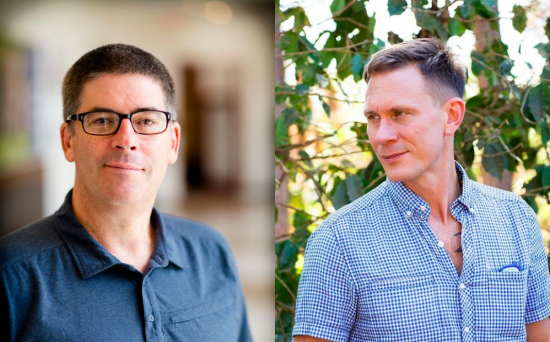
The 2019 Specialty Coffee Transaction Guide culls from nearly 60 parties to provide a current snapshot of how much roasters are paying for coffee.
BY CHRIS RYAN
BARISTA MAGAZINE ONLINE
As the conversation around coffee prices has continued to rise in volume in recent years—boosted in part by the Specialty Coffee Association launching the Coffee Price Crisis Response Initiative—an important tool entered the conversation at the end of 2018: the Specialty Coffee Transaction Guide.
The guide collected detailed contract data—produced by a host of “data donors”—covering coffee transactions from recent harvests, in an effort to provide coffee buyers, farmers, and others an alternative to coffee commodity prices. At the end of December, the guide received an upgrade with the release of the 2019 edition, which draws from 57 data donors (compared to 21 for the first guide) referencing 38,000 contracts that cover more than 625 million pounds of green coffee valued at $1.4 billion.

The main actors behind the Specialty Coffee Transaction Guide are Peter W. Roberts of Transparent Trade Coffee (TTC), an organization funded by the Goizueta Business School at Emory University in Atlanta, and Chad Trewick of Reciprocafé LLC, a consultancy focused on encouraging transparency within the coffee value chain.
For the 2019 guide, Chad and Peter aimed to not just build a larger pool from which to draw data, but for that pool to reflect more diversity—the 57 donors from the 2019 guide include specialty-coffee farmers, support organizations, exporters, importers, and roasters. “In order for the guide to be an increasingly useful and relevant tool for the industry moving forward, it must aspire to reflect an unbiased market reality, and this means including data donors who represent larger and smaller volumes of diverse qualities of specialty coffee,” Chad says. “They should also come from, and work in, a range of different countries and markets.”
Peter adds that working with a diverse set of data donors helps the 2019 guide better reflect purchasing behavior across the whole specialty-coffee industry. “This ensures that conversations around the observations we present are grounded in reality, and therefore difficult to disregard as prices from only ‘fancy and progressive’ buyers,” Peter says.

So what do the numbers in the guide tell us about current green-coffee prices? As one would expect from the perpetually low C market and the consistent industry conversation around pricing, the numbers indicate room for improvement. The overall median FOB price (FOB stands for Free on Board, which is commonly used to convey the portion of green coffee prices that stays in the country where it was produced) over the last three years from the guide’s data donors is $2.80, with prices (in the 2018/2019 harvest season) ranging from $1.26 (at the fifth percentile) to $5.80 (at the 95th percentile). The most room for improvement is perhaps in the lower-quality (80-81.9 and 82-83.9-point coffees) and highest-quantity (lots exceeding 40,000 pounds) categories that are among the most populous categories in the guide. The median prices for these categories (at $1.60) is near to or lower than most cost of production estimates in many countries. This means that more than half of the farmers producing these coffees may continue to struggle to break even, let alone earn a livable wage from coffee.
Median prices are one of the insights included in the guide—it also breaks down donor data on pricing into numerous categories, including by country, by region, and by cupping score, to name a few. Chad says that through this information, the team behind the guide hopes to shed light on elements such as cost of production and quality levels that could dictate coffee pricing in a more practical way than the C market does. “We believe the guide does (and will continue to) present information that is an appropriate foundation for those forthcoming difficult conversations that will begin to explore where coffee can be preserved as both a livelihood-supporting activity and an ingredient for the specialty-coffee industry,” he says.
With the guide now released, Peter says the industry response has been strong, with more than 1,000 downloads from 80 different countries so far. “Roughly a quarter of these are by coffee producers, cooperatives, and farmer support organizations,” he says. “All of these numbers are well ahead of the pace set when we launched the 2018 Transaction Guide (which ended the year with roughly 2,300 downloads). This is important because the information in the guide can only have an impact if folks are accessing, sharing, and talking about it.”
The team behind the guide will host their second annual meeting of data donors and supporters in Guatemala in June, where they will work toward building the 2020 guide and continuing to deliver a useful industry tool promoting differentiated coffee prices that benefit the entire coffee supply chain. “It is clear that we will be able to continue to grow the pool of data donors,” Chad says. “It also seems clear that there is an appetite among industry folks to have this pricing information, and to learn how to use it. In between, there are a lot of individuals and organizations with great ideas about how the improve access to the information housed in each guide. And there are others keen to conduct research projects based on the detailed pricing information. So all of the key elements are in place. As long as we can take care of the more mundane tasks of fundraising and organization-building, we expect to be able to continue guiding this movement forward.”
You can download the full 2019 Specialty Coffee Transaction Guide—in English, Spanish, and Portuguese—here.

